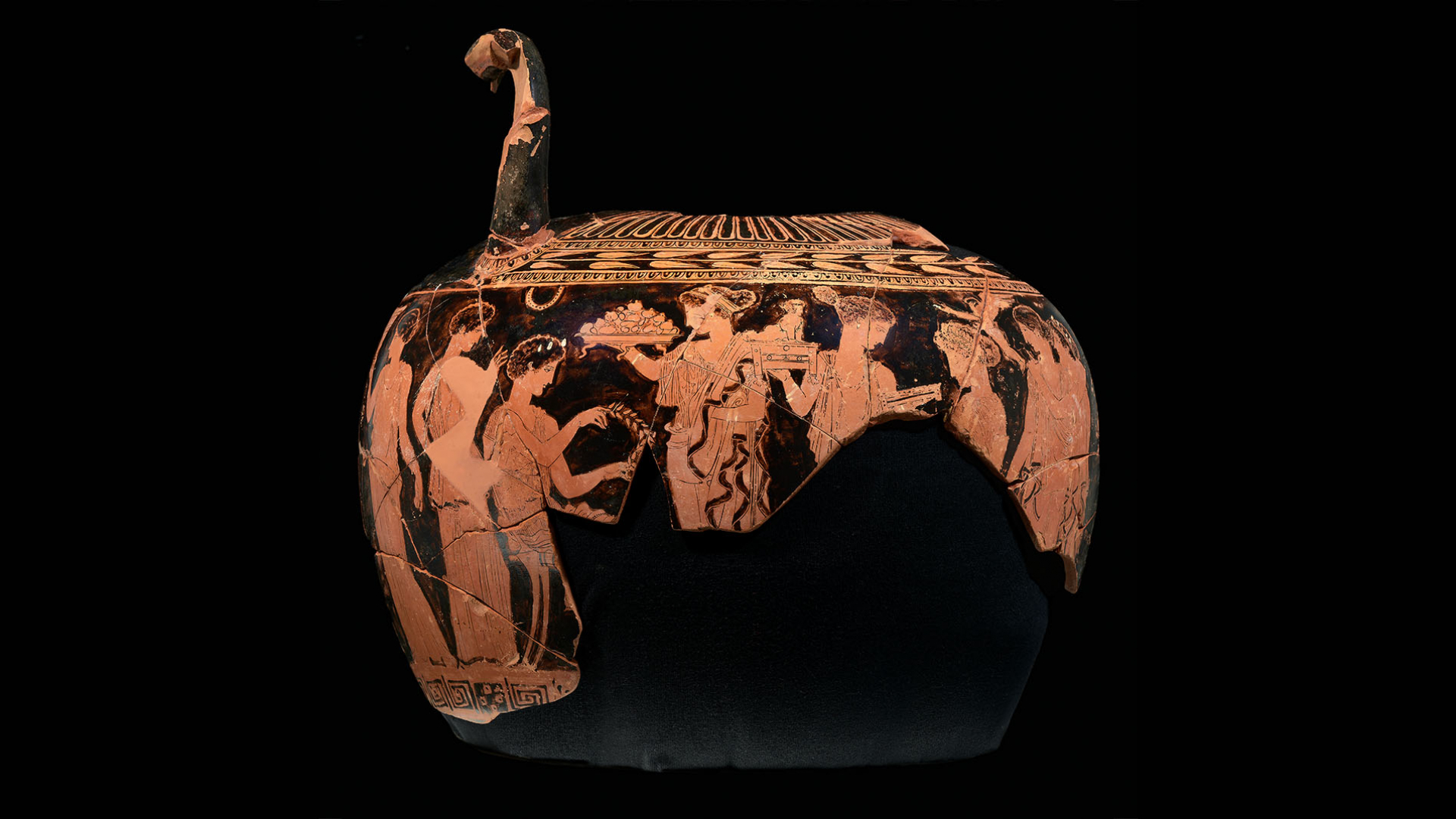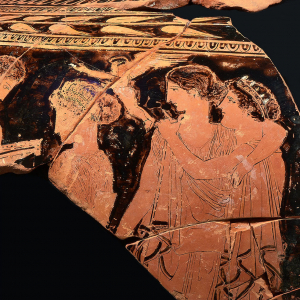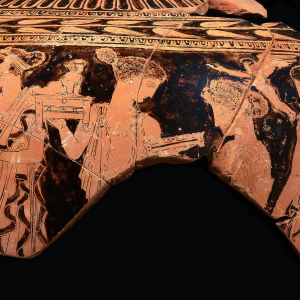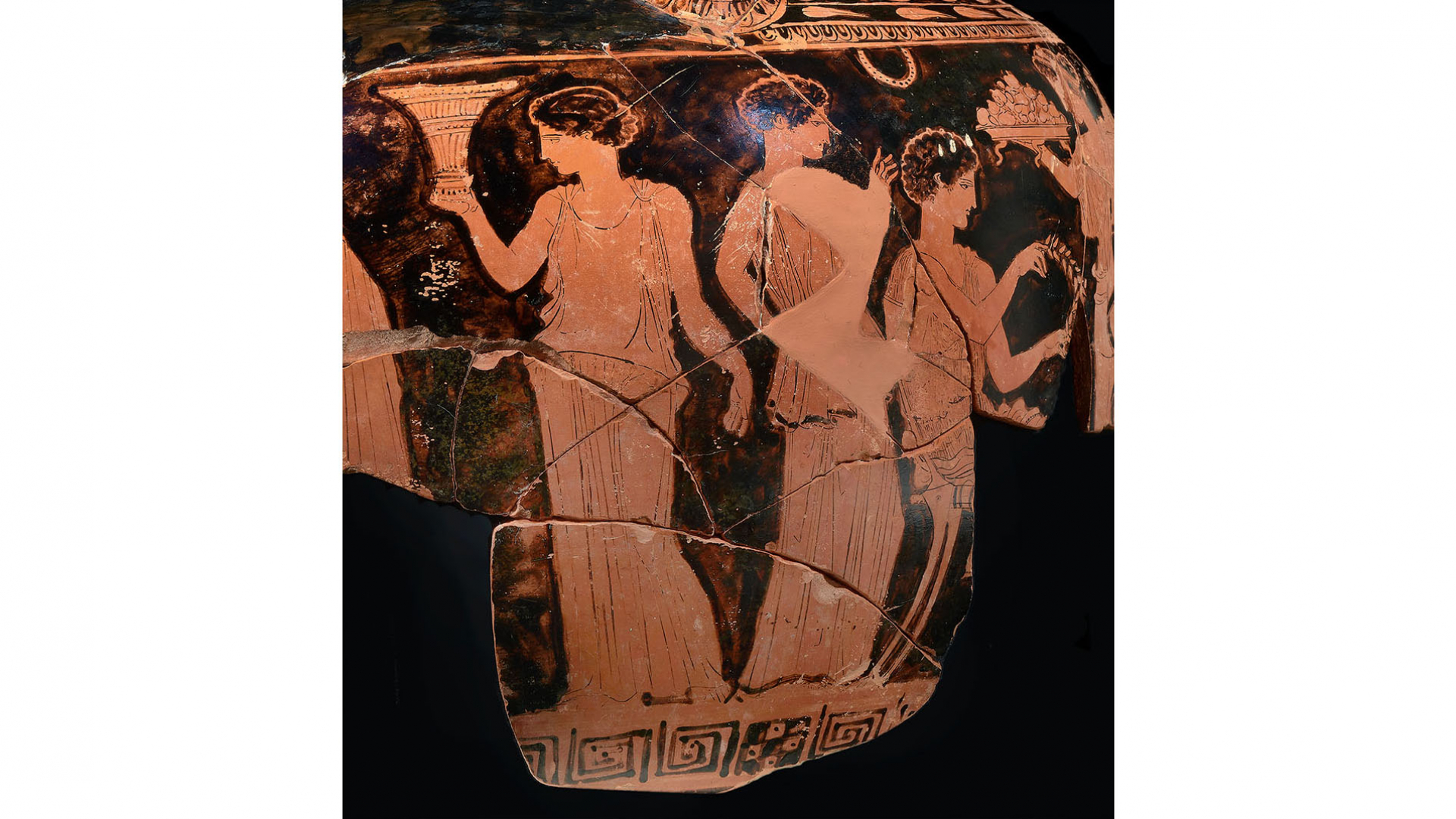Understanding wedding rituals through images on a vase from Ancient Greece
Marriage in Athens 2400 years ago varied significantly from today’s ceremonies. The father chose his daughter’s husband, whom she met for the first time on her wedding night. The event was celebrated over three days beginning with the Proaulia, initiating the bride’s passage from child to adult. The second day was the Gamos, the actual wedding day when the bride was given a nuptial bath, finely dressed, and adorned with jewellery; followed by the wedding festivities. After the feasting, the bride was unveiled and her father gave her to the groom. Both parties legitimized their union, as they were witnessed by the guests. Lastly, partygoers led the newlyweds through the streets of Athens to the groom’s house—their new home. During the Epaulia, the third day, relatives and friends brought gifts to the couple. Sacrifices were offered to the gods on each day.
Among the gifts, the bride cherished a special wedding vase called a lebes gamikos, decorated with nuptial images. The ROM has a group of painted red-figure pottery fragments from a lebes gamikos that preserves scenes of women preparing two brides for their big day. The fragments are attributed to the Washing Painter, active in Athens around 420 BCE. He was an accomplished wedding vase painter who inventively transformed conventional marriage scenes into a new visual dialogue of nuptial images that offered several layers of meaning.
Left: Aphrodite and Paitho embracing behind a seated bride as Eros flies above. Right: A women offers jewellery to the bridge. The infant on the lid of the casket alludes to male offspring that the bride desires.
Interpreting the imagery begins on the right side with a pair of women embracing behind the seated and crowned bride. They are Aphrodite, the goddess of love, on the right and her companion Paitho, the personification of erotic persuasion. Aphrodite, gazes at Eros, her son, flying above the bride, whom she has dispatched with a simple motion of her index finger. Aphrodite has sent Eros/erotic love, to the bride as her gift. Paitho, looking directly at the bride, will use her power of persuasion to eliminate any doubt the young bride may feel as she embarks on a new phase of her life.
Standing in front of the bride, the woman holding two chests plays a dual role. She not only offers jewellery to the bride, but the infant perched on the lid of the casket alludes the male child the bride desires to have, the most important gift of an Athenian marriage.
On the left, a second seated bride holding a wreath is having her hair groomed and offered food by another woman. Providing sustenance to the bride follows the tradition that she must eat something shortly after entering her husband’s home. This gesture signifies her acceptance of his guardianship over her. As well, she will become the matron and faithful guardian of the home. The woman standing behind her holds a kalathos, a cone-shaped basket holding wool, that refers to her domestic role and duties, like weaving textiles.
Admiring her wedding vase, the young bride understood the message. In an ideal realm created by the Washing Painter, where the bride mingled with Aphrodite, Eros, and Peitho, she would have seen her future unfold before her eyes as an allegory, as she transitioned from virgin, to bride, to mother, and to matron of the household. The feminine intimacy of the picture with women adorning, grooming, caressing, and exchanging gifts would have resonated with her present communal experience of a passage to a new life.




